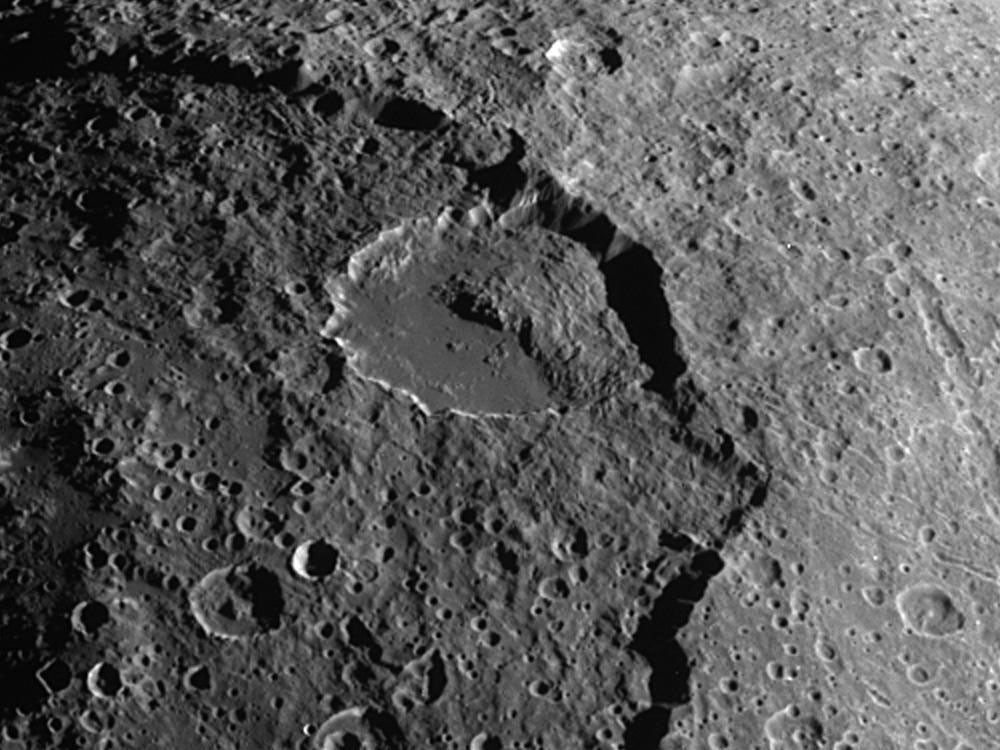Extensive analyses and modeling of Cassini imaging and heat-mapping data have confirmed and extended previous ideas that migrating ice, triggered by infalling reddish dust that darkens and warms the surface, may explain the mysterious two-toned “yin-yang” appearance of Saturn’s moon Iapetus.
Shortly after he discovered Iapetus in 1671, the French-Italian astronomer Giovanni Domenico Cassini noticed that the surface is much darker on its leading side, the side that faces forward in its orbit around Saturn, than on the opposite trailing hemisphere. Images from Voyager and Cassini have shown that the dark material on the leading side extends onto the trailing side near the equator. The bright material on the trailing side, which consists mostly of water ice and is 10 times brighter than the dark material, extends across the north and south poles onto the leading side.
Tilmann Denk of the Freie Universitat in Berlin describes findings made by Cassini’s Imaging Science Subsystem (ISS) cameras during the spacecraft’s close flyby of Iapetus September 10, 2007, and on previous encounters. “ISS images show that both the bright and dark materials on Iapetus’ leading side are redder than similar material on the trailing side,” said Denk, suggesting that the leading side is colored (and slightly darkened) by reddish dust that Iapetus has swept up in its orbit around Saturn. This observation provides new confirmation of an old idea that Iapetus’ leading side has been darkened somewhat by infalling dark dust from an external source, perhaps from one or more of Saturn’s outer moons. The dust may be related to the giant ring around Saturn recently discovered by NASA’s Spitzer Space Telescope. However, the ISS images show that this infalling dust cannot be the sole cause of the extreme global brightness dichotomy.
“It is impossible that the very complicated and sharp boundary between the dark and the bright regions is formed by simple infall of material. Thus, we had to find another mechanism,” said Denk.
Close-up ISS images provide a clue, showing evidence for thermal segregation in which water ice has migrated locally from sunward-facing (warmer) areas to nearby poleward-facing (colder) areas, darkening and warming the former and brightening and cooling the latter.
John Spencer of Southwest Research Institute in Boulder, Colorado, and Denk added runaway global migration of water ice into the picture to explain the global appearance of Iapetus. Their model synthesizes ISS results with thermal observations from Cassini’s Composite Infrared Spectrometer (CIRS) and computer models.
CIRS observations in 2005 and 2007 found that the dark regions reach temperatures high enough (-227° Fahrenheit [129 kelvins]) to evaporate many meters of ice over billions of years. Iapetus’ long rotation period, 79 days, contributes to these warm temperatures by giving the Sun more time to warm the surface each day than on faster-rotating moons. Spencer and Denk propose that the infalling dust darkens the leading side of Iapetus, which therefore absorbs more sunlight and heats up enough to trigger evaporation of the ice near the equator.
The evaporating ice recondenses on the colder and brighter poles and on the trailing hemisphere. The loss of ice leaves dark material behind, causing further darkening, warming, and ice evaporation on the leading side and near the equator. Simultaneously, the trailing side and poles continue to brighten and cool due to ice condensation until Iapetus ends up with extreme contrasts in surface brightness in the pattern seen today.
The relatively small size of Iapetus, which is just 900 miles (1,500 kilometers) across, and its corresponding low gravity allow the ice to move easily from one hemisphere to another. “Iapetus is the victim of a runaway feedback loop, operating on a global scale,” said Spencer.










